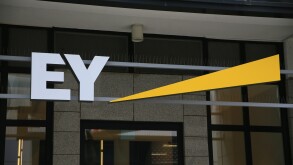Structuring international business effectively has never been more important, with each part of a company’s supply chain being examined thoroughly, and with tax authorities keen to bring in as much revenue as possible. While the merits of using branches around the world with one overseeing entity are clear to see from a tax administration point of view, easing the compliance burden is not the only concern taxpayers need to be aware of.
“In a global economy one might think that a global enterprise with only one legal entity and branches in many countries would facilitate management,” said Pierre-Yves Bourtourault, of Baker & McKenzie’s Paris office. “However, this would be without taking into account a number of legal, tax, risk and other issues which need to be considered.”
Easiest does not mean best
Bourtourault said the structure that is easiest or most obvious to implement does not always provide the most efficient way of organising the global business.
Operating through subsidiaries shares certain similarities with operating via branches, though the two differ in a number of ways.
The financing of a subsidiary is one issue to be dealt with. Taxpayers also need to file separate accounts and tax returns when using a subsidiary. On the other hand, using a branch reduces the overall costs for the group. It is also much easier to establish and set up a branch (or, conversely, to close one), whereas the incorporation or removal of a subsidiary can be more complex.
The main downside to using branches, however, is that it is difficult to manage the contractual interaction between different parts of the same legal entity, which means that attributing profits to a permanent establishment is more troublesome than dealing with a subsidiary, where clear principles can be applied.
“While in theory subsidiaries and branches should be treated similarly from a tax standpoint, there are still a number of differences under domestic laws and treaties to be identified on a case-by-case basis,” said Bourtourault. “These include the fact that profit allocation under each alternative may result in different taxable income; the fact that access to treaties needs to be checked; and that the use of losses and profit repatriation may be impacted.”
Bourtourault had one overriding message for taxpayers.
“The selection of branches or subsidiaries is not neutral and should be part of the planning strategy,” he said.
The issue of whether to use branches or subsidiaries for structuring international business will be a hotly debated topic at International Tax Review and TPWeek’s 12th Annual Global Transfer Pricing Forum in Paris next month.
The forum takes place on September 24 and 25 and will feature Napoleao Dagnese, head of international tax at OC Oerlikon Management in Switzerland; Inga Kondrataite, senior manager, transfer pricing at Nissan Europe; Sam Sim, head of wholesale transfer pricing at Standard Chartered Bank in Singapore; and Stephan Schnorberger, partner at Baker & McKenzie Germany, alongside Bourtourault on a panel dedicated to exploring the practical differences in using branches versus corporate subsidiaries in international business structures.










